| |
|

JEWISH CONNECTIONS IN DANCE
The differences and similarities between a dreidel and a pirouette
By Sheila Orysiek
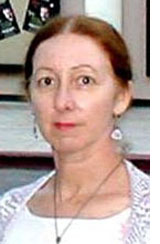 SAN DIEGO—Both spin around. Both stop spinning around. How they stop is more important than how many times they spin. Both are subject to the laws of physics. Both take skill and a little luck. Both can bring smiles or frowns. One important difference is that the success of the pirouette must be reproducible - on demand; again and again; producing the same effect, same number of rotations to the same beat of the music. Another important difference is that the audience has paid to see a successful pirouette. SAN DIEGO—Both spin around. Both stop spinning around. How they stop is more important than how many times they spin. Both are subject to the laws of physics. Both take skill and a little luck. Both can bring smiles or frowns. One important difference is that the success of the pirouette must be reproducible - on demand; again and again; producing the same effect, same number of rotations to the same beat of the music. Another important difference is that the audience has paid to see a successful pirouette.
How does the dancer cause the pirouette (or any turn) to have a predictable, on demand reproducible outcome? The dancer learns the recipe. There are certain specific ingredients that go into the product, but it also is subject to a number of vagaries such as: environment (floor, shoes, weather), mental outlook (confidence), physical attributes (shape of
Sheila Orysiek
the dancer) and skill. Men – generally speaking – are much better at turns than women. Men are shaped more like a child’s spinning top – a V shape going from foot to shoulders. Women – well – have some detours going from foot to shoulders. Women also have a looser hip construction which affects the “tightness” of the turn. However, I’ve seen women do as many as six rotations, but I’ve seen men do as many as twelve. These are not wildly tossed off turns – but controlled and finely finished. It is also more advantageous to be short – it’s harder to spin a long object than a short one.
It is important to keep the shape constant. The dreidel has no moving parts, so it can’t collapse upon itself – but a dancer has lots of moving parts and can certainly collapse upon himself such as losing tension in the abdominal muscles or spine. Or one part can get ahead of other parts – like a shoulder opening ahead of the rest of the torso, or arms lingering behind. Here again, men have an advantage – their “parts” tend to be more tightly knit.
It’s the ending which either makes or breaks the entire effect of the turn. No matter how marvelously (fast or slow) the turn occurs, or how many rotations are accomplished, if the ending is not clean and smooth, all that preceded it is erased from the memory of the observer (audience). And, from the dancer’s mind as well.
Though I’m using pirouettes as an example the rules apply to other turns of which there are probably a hundred varieties in the ballet vocabulary. A pirouette is a turn on one foot which occurs sur la place (begins and ends in the same place). The pirouette can be of various speeds, one or more rotations, begin or end in any position of the feet, arms can be held in dozens of different ways. The important defining item is that during the actual rotation/s the dancer is on one foot – though he can begin or end on one or both feet.
The pirouette begins with an impetus of some sort: pushing off from two feet, pushing off from one foot, or an outside force (like a partner), much like the thumb and forefinger are used to set off the dreidel. The amount of force is crucial: too much and the dreidel – or dancer – spins out of control (one falls out of the turn, the other falls off the table) – so one needs to learn the exact amount of force needed to accomplish the goal. Much the same as driving a car – the more speed the more difficult it is to control the stop; not enough speed and the rotation doesn’t happen.
After the initial force is in play both the dreidel and the dancer need to rotate while being correctly aligned to the surface; a tilted dreidel quickly stops – a tilted dancer quickly falls off. So, the initial force has to impel both the dreidel and the dancer not only to go around, but to go around while being perpendicular to the sustaining surface. The dreidel will be on its pointy end, the dancer will be either on demi-pointe or full pointe of the foot. Since the dancer starts out on a flat foot but then rises to demi/full pointe, the weight has to shift significantly forward (to the front part of the foot) as well as up.
Now friction comes into play. In an earlier paragraph I mentioned “weather” as being a variable: in dry weather the floor tends to be “faster” (drier), while in damp weather the floor is “slower” (moister). This also affects the dancer’s shoes. An experienced dancer knows this and it enters his calculations as to how much energy to use for the initial thrust.
After a while a spinning dreidel begins to lose speed – it is entirely at the mercy of the laws of physics. The dancer, however, though certainly as subject to physics, can exert influence by affirmatively using those laws. If the dancer wishes to slow down, he need only put down the heel of his spinning foot; the added friction will slow him down – contracting the shoulders will do the same thing. Or, he can extend his arms to affect the momentum of the turn. Likewise, he can bring his hands closer to his body to add speed. Ice skaters do this very dramatically during scratch spins.
Unlike dreidels, dancers usually have a preference which way to turn: right or left. They certainly can do it to either side, but prefer one over the other. Ice skaters always turn to the right (well, almost always), but if a dancer is performing a solo, he will usually be given his choice. It has nothing to do with being right or left hand/eye/foot dominant. Men seem to prefer the left more than women. In addition, as a woman, I’ve found it to be very hormonal; preference for direction as well as ability to turn smoothly changed depending upon the cycle.
Turns are also quite fragile and can be affected by tiredness, illness or incipient illness. How my pirouettes were going was often the first clue I had to an oncoming head cold which actually made its appearance a couple days later. Mental attitude plays quite an important role; a dancer who is wary of turns will approach them in a way that begets a self-fulfilling negative prophecy. Turns have to be approached with confidence, any hesitation and they don’t “happen.” You can’t spin a dreidel tentatively either.
An important component of turning is “spotting.” A dancer’s head begins its turn after the body has begun its rotation: the head spins later than the body, but, and this is important – completes the rotation just before the body does. If the dancer is looking into a mirror, he fastens his view on the reflected image of his own eyes. The body begins its rotation, the head lingers behind as long as it is able, then rotates (snaps around) to complete the turn before the body is quite finished – and the dancer re-establishes his view of his own eyes in the mirror. If it is done correctly, he has seen nothing of the rest of the room – only his own eyes in the mirror at the beginning and the end of the rotation. It is all done very quickly: “look-snap-look.”
The “look” part is crucial. The dancer can’t just kinda-sorta look – he has to really SEE – consciously see – know what he sees – affirmatively see. This keeps him from getting dizzy, and lets him know where he is in space so he is ready to go to the next part of the dance after the turn has finished. I can think of only one turn in the entire ballet vocabulary in which a snapping spot does not occur – and this is a slow turn in attitude or arabesque.
Spotting gives coherency to the turn. I have seen a male dancer use enough initial impetus to accomplish five rotations, but after that though the initial force dissipates - if he maintains his alignment (perpendicularity), he can simply use his spotting head – the head snapping around – to add as many as seven more rotations. The theory is: if the head goes around the body must follow. (If it doesn’t, the dancer has other problems!)
What does the dancer spot while on stage since there are no mirrors? He may spot a member of the audience – or more likely the lights on the forward edge of the balcony, or the “exit” signs above the auditorium doors in the back of the theater. Some theaters actually supply points of light for this purpose. If he is spotting into the wings he might have a friend stand in the wings to act as an object to spot. It can be really difficult, especially if the dancer is moving in cone of light: a “follow light.” Whatever the dancer uses as a spot it has to be eye level. If the dancer is executing a turn sequence that moves in space such as in a circle around the stage, the dancer actually spots it as a square – but it looks like a circle to the audience. So, if he’s circling the stage with 12 turns, he’ll change his focus (advance his spot) every third turn.
One very famous retired prima ballerina assoluta, Alicia Alonso, who is blind, said she spotted an object in her imagination and for the brief interim when she had her sight, she said being able to see actually confused her.
A dreidel, on the other hand, doesn’t have any of these problems.



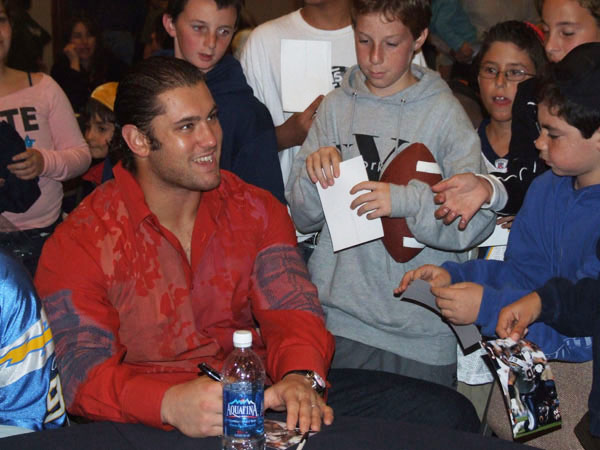
THE JEWISH CITIZEN
Beth Am packed with Olshansky fans
By Donald H. Harrison
 SAN DIEGO—As scores of hero-worshipping kids queued to have San Diego Charger Igor Olshansky sign pictures, shirts, pennants, caps and other souvenir items, they may have dreamed about someday becoming an athlete just like him. But after the Jewish defensive end spoke at Congregation Beth Am on Monday night, Dec. 3, perhaps some of the youngsters were pondering another profession: Sports medicine! SAN DIEGO—As scores of hero-worshipping kids queued to have San Diego Charger Igor Olshansky sign pictures, shirts, pennants, caps and other souvenir items, they may have dreamed about someday becoming an athlete just like him. But after the Jewish defensive end spoke at Congregation Beth Am on Monday night, Dec. 3, perhaps some of the youngsters were pondering another profession: Sports medicine!
Yes, there is glory, but with football comes injuries and a lot of pain,
Donald H. Harrison
Olshansky emphasized in a question-and-answer session led by Double X Radio (AM-1090) sports announcer Scott Kaplan, a board member at the Conservative congregation.
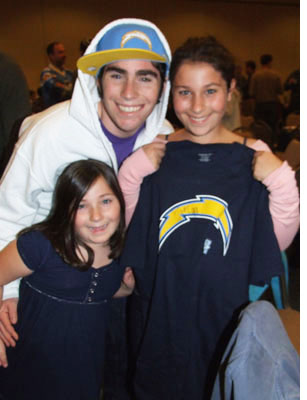 The 25-year-old, four-year veteran of the National Football League didn’t start playing football until he was a junior in high school. An immigrant to San Francisco from the Ukraine, Olshansky initially played high school basketball, but a coach, Vince Tringali, realized that the big and strong Olshansky had a body better suited for football. Olshansky switched over in his junior year, and was good enough to play for the University of Oregon Ducks. The 25-year-old, four-year veteran of the National Football League didn’t start playing football until he was a junior in high school. An immigrant to San Francisco from the Ukraine, Olshansky initially played high school basketball, but a coach, Vince Tringali, realized that the big and strong Olshansky had a body better suited for football. Olshansky switched over in his junior year, and was good enough to play for the University of Oregon Ducks.
Almost immediately he dislocated a shoulder, and later on there would be back problems, but being strong (he has bench pressed 550 pounds) and big (he is 6’6, and has a listed weight of 309 pounds), he pushed through the pain to build a career as a footballer.
There are so many parts of the body that can get hurt in football, Olshansky commented, listing the knee, hip, ankle, shoulder, elbow and back as particularly vulnerable. There may not be time to heal before another game has to be played on Sunday. Still hurting before he plays, he requires
medication to ward off the additional bruising pain he is bound to suffer while attempting to clog up the lane against an opposing runner, or after sacking a quarterback.
On Monday, the day after the game, when he is really hurting, he takes Toradol, a pain killer, he said. On Tuesday, he may have two chiropractors and a physical therapist working on his shoulder. On Wednesday, he typically feels pretty good, and “then we have practice…and you feel terrible again.” Thursday, there is more practice and “you feel terrible.” On Friday it is a light day, “and you feel a little better.” On Saturday, the day before the game, you continue to feel better. And then comes Sunday and the cycle starts again.
The defensive end said quite revealingly that if he weren’t paid, he wouldn’t play football. Not that he doesn’t love the game and its camaraderie, he does. “The reason I wouldn’t play is because it is so dangerous. I want to have a lot of kids. (His wife is pregnant with their first child, a boy he plans to name Lawrence). I want to be able to run around with my kids.”
He looks forward to helping Lawrence condition himself physically, so that he can play whatever game he wants—not necessarily football, he said.
Looking ahead, said Olshansky, he expects that he will be able to play in the NFL for a total of ten years, and hopes in that time that he can earn enough money to continue supporting his wife and children, his parents, and to help out his sister if she needs it. He’d like to be able to put his earnings in the bank and “live off the interest.”
The need to earn a lot of money in a relatively short time, before injuries or age sideline him, make Olshansky wary of what he calls the “politics” of football. The decisions of who plays, whose photo is put on the program, or the ticket stubs are not always determined by a player’s ability. Yet, such decisions may influence whether a player goes to the Pro Bowl, whether he may someday go to the Hall of Fame. Olshansky doesn’t like politics; one gets the feeling nothing would make him happier than to be able to sack ‘politics;’ in his memorable phrase, to make it “eat grass.”
Rabbi David Kornberg, spiritual leader of Congregation Beth Am, voiced some of the enthusiasm for the appearance of San Diego Chargers #99 – the real one, not any of the dozen or so people who were wearing the jersey with his number on it.
“As a dad,” commented Kornberg before leading ha motzi for the Men’s club event, “it is so incredible to say not only that my kids look up to somebody who plays sports, but that my kids look up to somebody who plays sports and is proud to be a Jew also.”
Kaplan, introducing Olshansky, told the young fans: “When your moms and dads were kids, there was only one guy we all grew up with and heard about when it came to Jewish athletes—Sandy Koufax…the great baseball player for the Dodgers, and we are so lucky now in San Diego to have…the next great big superstar Jewish athlete, a guy they will be talking about for generations.”
He suggested that Olshansky has everything on the field, except a dance to do after a successful play. Someone suggested that he could do the hora. Kaplan, laughing at the image, shouted back: “I can see that, all his teammates putting him on a chair.” There was quite bit of laughter.
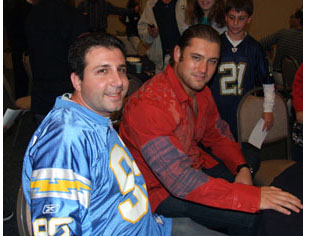 “We are so lucky to have a superstar Jewish football player in town,” Kaplan continued. “Someone who embraces being Jewish, grew up playing in the Maccabi games…” Olshansky also went to a Jewish day school, which his parents placed him in after deciding they didn’t like the way he and his friends in public school were talking. “We are so lucky to have a superstar Jewish football player in town,” Kaplan continued. “Someone who embraces being Jewish, grew up playing in the Maccabi games…” Olshansky also went to a Jewish day school, which his parents placed him in after deciding they didn’t like the way he and his friends in public school were talking.
Brian Davis, the Men’s Club president at Beth Am, said that the event which drew over 240 people for a kosher version of a sports stadium-like buffet – hamburgers, hotdogs, chicken—was a success because Olshansky was someone whom the youth
“look up to. .,, Some of these kids have dreams and aspirations and here is someone who has fulfilled them and worked hard to get there,” Davis said. “It doesn’t matter whether it is sports or anything in life. If you work hard and do your best, and stay at it, you can succeed.”
That goes for football….and for sports medicine.


THE JEWS DOWN UNDER
Two Jews and new friends in Parliament
By Garry Fabian
CANBERRA, Australia—Labor's Federal Election win last week heralds a step into the
unknown for the Jewish community, but there will be more Jews and supporters of Israel sitting on the government side of the new parliament.
Joining re-elected Melbourne Ports MP Michael Danby will be Mark Dreyfus, who was victorious in the southern Melbourne seat of Isaacs. Dandy and Dreyfus will be joined by a handful of new representatives who are on the record with their support for Israel and the Jewish community.
Mike Kelly in Eden Monaro, Bill Shorten in Maribyrnong and Victorian Senators David Feeney and Scott Ryan are among others who should ensure the Jewish community is in for an interesting, and hopefully prosperous time.
While there was plenty of rejoicing and a l'chaim or two, when it was realised that Jewish interests would be well represented in the new government, there also was a touch of sadness at the fate of the deposed prime minister, John Howard. The former prime minister had shown unwavering commitment to the Jewish community and its homeland.
John Howard, who attended countless community functions, supported Israel at home and in the international arena, and has many close friends in the community, solemnly exited the stage after 33 years in parliament.
This year, Howard was honoured with a forest in the Negev by the Jewish National Fund and the Jerusalem Prize by the Zionist Federation of Australia, and he has previously been commended by B'nai B'rith, the Australia-Israel Chamber of Commerce and the Jewish Communal Appeal.
Throughout the election campaign, Labor candidates, from shadow ministers to newcomers, continued to promise that a change of government would not spell the end of Australia's strong relationship with Israel.
Church group slammed for trip 'bias'
MELBOURNE—A "Solidarity mission" to the Middle East next week by a group of Australian church leaders has been criticised by Jewish community leadership for its lack of balance.
The group led by Reverend Gregor Henderson, the president of the National Council of the Uniting Church of Australia which includes leaders from a variety of denominations, will spend its entire trip
in the West Bank without once visiting Israel.
Melbourne Ports MP Michael Danby condemned the group's "biased trip" and called on the delegation to at least visit Yad Vashem and to meet with committed Israeli supporters of a two-state solution, such as MK Ephraim Sneh.
"I condemn the one-sided program of these church leaders and call on them to be fair and to balance their visit by at least seeing the other side" Danby said.
"The only people who still appear to have such a blinkered view is the National Council of Churches".
Both the Executive Council of Australian Jewry and the Israeli Embassy have made overtures to the group to include Israel as part of its trip, but with little success.
"The trip is not balanced at all,” Israeli Embassy spokesman Dor Shapira. "If they want really to understand Israeli-Palestinian conflict and try to assist, then they really must see both sides of the issue"
Interfaith veteran Rabbi John Levi also expressed disappointment that the group "appears unable to find even a hour to visit 'unoccupied Palestine'.
"Of course they are entitled to visit the Palestinian territories, but it is a bit disappointing that they don't want to contact both Christians and Jews who live in Israel" Levi said.
A last ditch attempt is being made for the group to visit a Peres Centre for Peace facility in East Jerusalem.
Toben pulls apology; denial remains on website
ADELAIDE—Despite a last-minute reversal, Adelaide Holocaust denier Dr Fredrick
Toben will be held to an order from the Federal Court of Australia last week that he remove all material denying the Holocaust from his Adelaide Institute website by 4 pm on Wednesday (December 5).
Executive Council of Australian Jewry (ECAJ)'s Jeremy Jones, the successful applicant in a Federal Court of Australia hearing, told The AJN this week that Dr Toben's apparent backdown from an apology he gave for his contempt of court last Tuesday did not alter the circumstances.
Dr Toben gave an unqualified apology to an Adelaide sitting of the Federal Court before Justice Michael Moore last Tuesday for being in contempt of a 2002 Federal Court order to remove offending material from the website
But writing on his website, he has since withdrawn the apology and has announced a halt to removing Holocaust denial material from the website.
In a posting, Dr Toben referred to last week's story in The AJN and stated: "If the... interpretation is consistent with the consent order, then I hereby publicly state I am withdrawing from the consent agreement, and although I have begun deleting material from the website, as part of the undertaking given to the court and to the applicant, I am now stopping this action."
Jones said that Dr Toben's court statement "acknowledged that he had been in breach of orders and now what he is doing is stating there that he will be in contempt of further orders".
Justice Moore last Tuesday set February 28 as a provisional date on which the court would reconvene if Dr Toben had not complied with the December 5 deadline but Jones said he hopes the court will examine any breaches earlier than that.
Community welcomes Smith as new foreign minister
MELBOURNE—THE Australian Jewish community has overwhelmingly supported the
appointment of Stephen Smith as Australia's new Foreign Affairs Minister.
Smith, who was given his new portfolio by Prime Minister-elect Kevin Rudd on Thursday morning, was previously Labor's shadow education minister.
Rudd also revealed that Mike Kelly, the MP for Eden Monaro who has a Jewish family, would become parliamentary secretary for defence to assist new Defence Minister Joel Fitzgibbon.
Australia Israel & Jewish Affairs Council executive director Colin Rubenstein said Smith is an "outstanding" choice for the position.
"Stephen Smith has a long history of support for, and warmth towards, Australia's Jewish community," Rubenstein said.
He said the new Foreign Affairs Minister has always been a "sincere and effective supporter of Israel,” and said that is expected to continue.
Smith toured Australia's largest Jewish school, Moriah College, with Rudd and Melbourne Ports MP Michael Danby in August to announce that Labor's $36 million package for Jewish schools.
That $36 million included $20 million for school security so the schools would not have to direct resources away from education.
"We would actually [prefer] the schools to be spending money on educational outcomes and so those schools which are assessed to be at risk will be eligible to apply for assistance," Smith said at the time.
Smith takes over from Robert McClelland, who as Labor's spokesman for foreign affairs pushed his party's plan to take Iran and its president Mahmoud Ahmadinejad to the International Court of Justice. It is understood that Smith will continue to pursue this action.
In other ministry appointments Nicola Roxon, who has a Jewish father, will continue overseeing the health portfolio, while Senator Kim Carr, who has a Jewish wife and children, has been appointed minister for Industry, Science and Innovation.
|
A wonderfully cohesive program brilliantly executed ... Zina Schiff is a first rate violinist fully up to the music's tremendous technical challenges ... who can get inside the soul of Bloch's extravagantly expressive music |
|
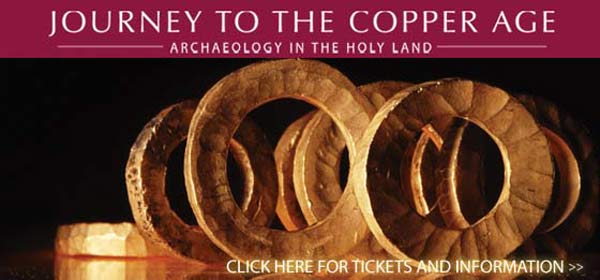

|
|

